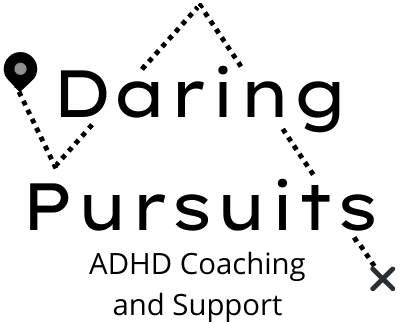While doing a pre-recorded activity, the instructor said “think about the things you’re grateful for and spend a minute really feeling it.” People on the program were smiling or crying, but I didn’t feel anything that would translate into those reactions. I didn’t really feel anything as I ran through my list in my head, least of all gratitude. “What does gratitude feel like again? Is it something people can conjure?”
Most of us have seen the studies about gratitude and the benefits that it can bring to your life. So, what if I can list the usual things that people expect to be on a gratitude list (my husband, my kids, my business, etc), but just listing those things doesn’t help me feel gratitude?
During coach training at ADDCA, we talked about the paradox of emotions with ADHD. Sometimes, we feel something so intensely that it becomes difficult to re-engage our logic. At other times we can logically work through something, but struggle to connect with it emotionally. Gratitude lists definitely fall into that second category for me.
How do we go about connecting to those emotions?
It helps to recognize what gratitude feels like. The best way I’ve found is to connect to a past memory when I know I experienced gratitude for my situation, or another person, and try to relive that feeling.
A few months ago, my daughter was looking through the photos on the cell phone the kids share. “Mom, have you seen this? It looks like a screenshot of a text, but it’s about you…” I looked down and saw a text where my son’s friend said “Your mom is really fat.” My son responded “Rude.” The kid sent back “No really, she’s a cow.”
Later that night, I recounted the situation to two of my friends from high school in a group chat. I told them how hurt I was and that I needed to write about it in a place where no one would reassure me that the kid was wrong, which is why I hadn’t talked to anyone else about it.
Their responses reminded me how thankful I am to have friends that would listen and respond with love, while honoring my request to avoid countering his words with platitudes. This memory has become my go-to when trying to conjure that feeling of gratitude.
On good days, I can just think about my friend’s responses and feel gratitude. On days that haven’t been smooth or easy-going, I have to recount the experience with as much detail as possible. I try to remember where I was sitting and how everything around me looked when I read those kind words from my friends.
If I can sit in that feeling and hold onto it, I can start to connect it to the obvious things on my list. I can even use it to add unexpected entries: Mentors that have helped me grow in compassionate and kind ways. (Thank you Jaqui and Diane!) The role of Jason Mraz’s music in my life, which has gotten me through every major situation since 2002. The variety of perspectives that I encounter each day, encouraging me to see the world around me in more nuanced ways. The support of friends and family when I decided to switch careers. The way that a slice of banana cream pie or coconut cream pie can be a tool of nostalgia, because it takes me back to a childhood growing up down the street from an Amish bakery.
Occasionally, the detailed items on my list can conjure the feeling of gratitude without having to tap into those memories, but it’s not consistent yet. Hopefully this process becomes easier with practice.
If you’ve been struggling to build a gratitude list or practice, I hope this is helpful in getting you started. What memory will you use to connect with the feelings of gratitude?
